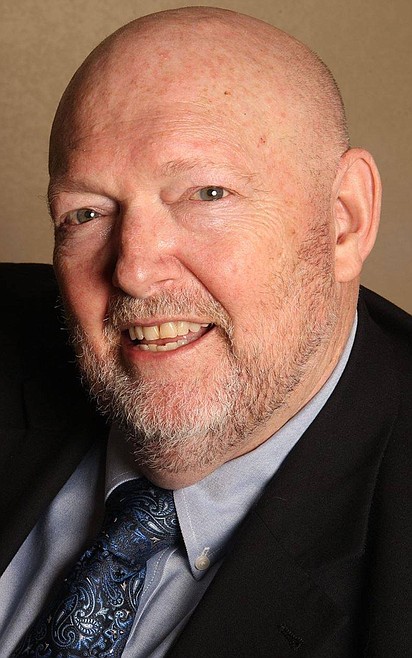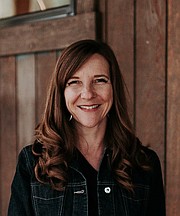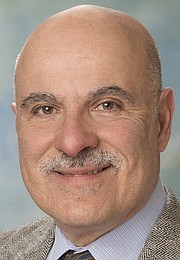Building for the future
County needs space, but that’s about where agreement ends
As Kootenai County commissioners consider facility expansion, one huge question looms: How to pay for it?
There’s no answer to that $25 million question, but options are emerging.
Commissioners could capture additional taxing authority as urban renewal districts close.
If they decide to capture that new growth, often the assumed "bonus" of urban renewal districts, they can use it to fund projects the county otherwise couldn't afford.
Steve Matheson, Kootenai County treasurer, said citizens should be involved in the process.
“I think it is incumbent upon all the taxpayers of Kootenai County to listen, to pay attention over the next few years,” Matheson said. “It needs to be a conversation: How does each taxing district plan to use this additional taxing authority? I'm certain most taxpayers would prefer their tax dollars stay within their own pockets and not simply be consumed by yet another taxing authority.”
The county expects a cash flow of at least $2.3 million per year as five urban renewal districts — one in Coeur d’Alene and four in Post Falls — close between 2020 and 2023. The taxing authority, in this case the county, can leverage or borrow against this new taxing authority up to $32.5 million, as estimated by the Panhandle Area Council.
But again, citizens’ opinions should guide the process, said Commissioner Leslie Duncan.
“I would want voter input if we were to use returning URD dollars,” she said.
Another option is that the BOCC could choose to float a bond to county voters. This is called a general obligation bond and requires a simple majority to pass.
Cash flows for this option can still come from URD closures, but the bond is supported by the full faith and credit of the taxing authority, Matheson said.
“Citizens have said yes, you can go into debt," Matheson said.
A possible benefit of the general obligation bond is that a future board can’t back out of the payments; they’re guaranteed by county residents. The downside? Kootenai County residents are not likely to approve a bond, Duncan said.
“School bonds haven’t been successful in the past and I just don’t think voters would vote for a bond on county facilities at this point,” she said.
Another option is an appropriation lease or lease purchase arrangement, also known as a non-appropriation bond. Someone else would effectively buy the new building and then arrange a lease-to-own situation with the county.
“Within the second option, non-appropriation bond, the BOCC is considering two options at his point in time,” Matheson said.
A bank-held bond, facilitated by the Panhandle Area Council, would essentially allow a bank to purchase the county’s debt for the life of the bond.
Like a bank-held bond, a certificate of participation would be contingent upon an annual lease payment by the county, but instead of being held by a single bank, the debt is held by many investors.
“When you invest in a bond you are trying to earn a return,” Matheson said. “The bank on the bank-held one needs a return on the interest for issuing this bond. Investors do the same thing.”
Both the bank-held bond and the certificate of participation are more expensive for the county because of interest charged by the bondholder. They are also more risky.
“Lease purchase is a complicated structure,” Matheson said. “What if one board in five years decides not to continue the lease? There is no guarantee that the next BOCC has to continue the lease.”
If the BOCC decided to float a bond to the voters and it passed, not only would payment be guaranteed, but that guarantee would cost the county and the taxpayers less money overall.
“We need to spend less on some things,” Commissioner Bill Brooks said. “We really need to decide what is a need and what is a want. When we take URD and use it on a building without people’s input, that's bad government. You can build that building as long as you convince the people that that building is necessary.”
Commissioner Chris Fillios said they won’t make a decision on the building until after the state legislative session ends, probably mid-April at the earliest.
“It’s certainly a high priority because we are running out of space,” he said.
The state mandated the county elect two more judges for fiscal year 2021. The judges and their associated staff, four to five clerks per judge, will need more space than is available, Fillios said.
“We have departments that are so scrunched that it is difficult for people to work,” he said.
The county pays $130,000 per year to lease work space for public defenders near U.S. 95 and, in some ways, pays for the loss in productivity as public defenders drive back and forth between their offices and the courthouse.
Duncan and commissioners consultant Shawn Riley have spent some time drafting department layouts in a new building, to help commissioners draw a financial estimate for the proposed project.
The county hasn’t built a facility since 1997. In that time about 200 employees have been added to the county’s payroll. The county now employs 830 people. The majority of those employees work out of the downtown Coeur d’Alene campus.
Riley, who worked as the county’s buildings and grounds director for 10 years before taking his current position, estimates there are only four office spaces left in the downtown complex. He understands some members of the public don’t want to see government growth.
“But you have more people here and there's more demand for your service,” Riley said. “For instance, in community development they have a need to hire more inspectors and they have no place to put them.”
The county has only 970 square feet left to expand. The new facility is slated to be built on the downtown campus between the two courthouses.
It's planned to be 15,000 square feet of floor with six floors, Riley said. The fifth and sixth floors would be shelled for future use.
Brooks said to hold up a minute.
“I think we should, No. 1, figure out how we’re going to pay for anything,” Brooks said.







